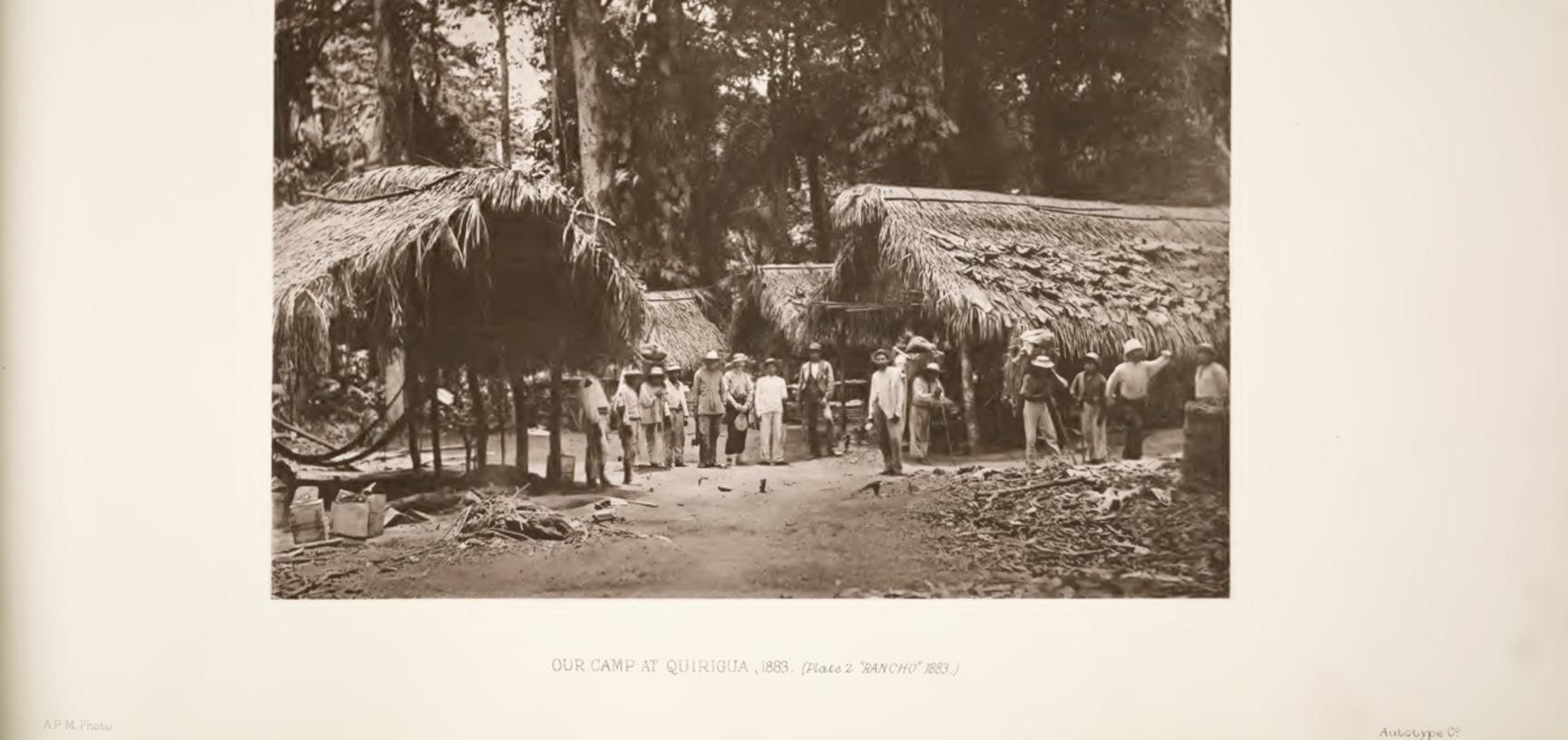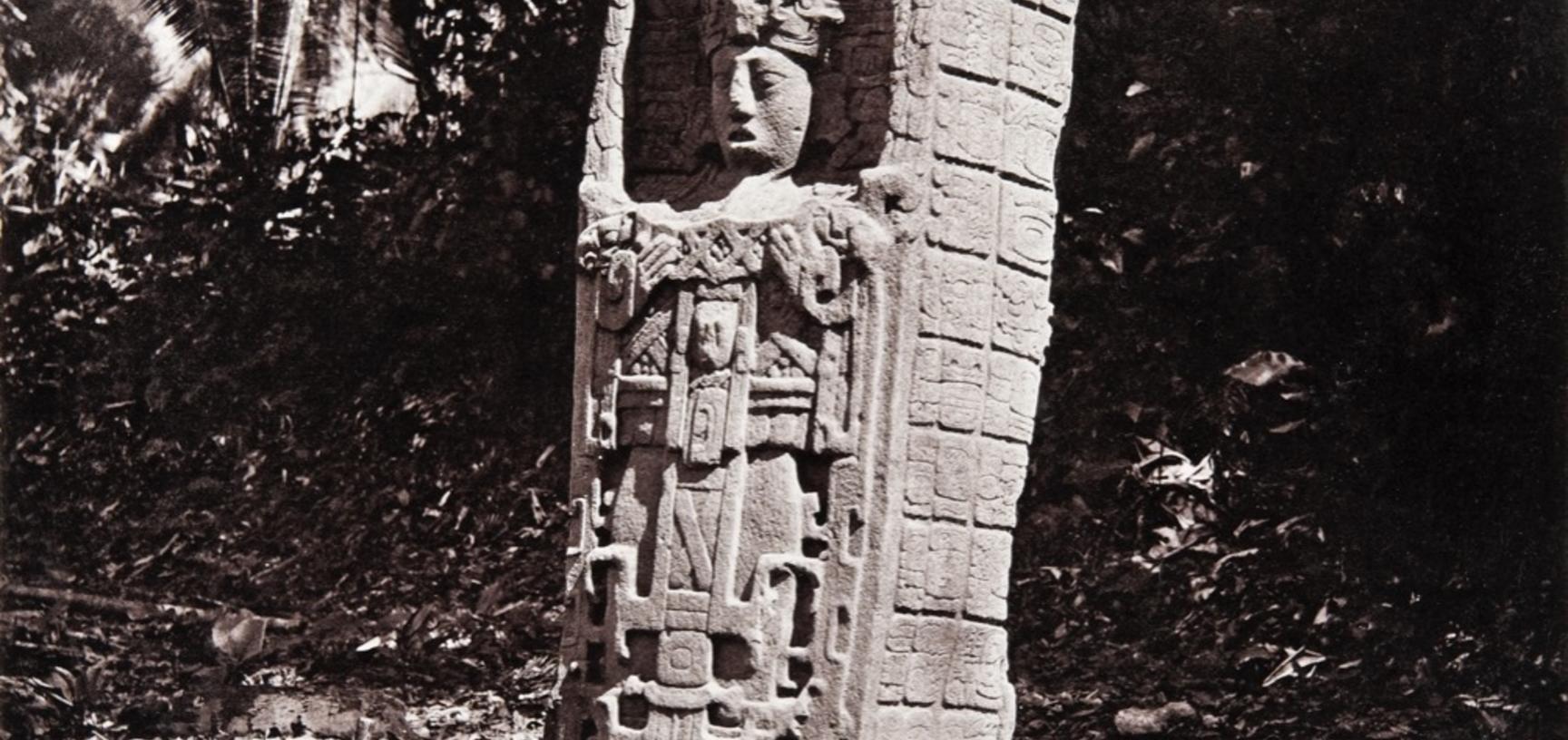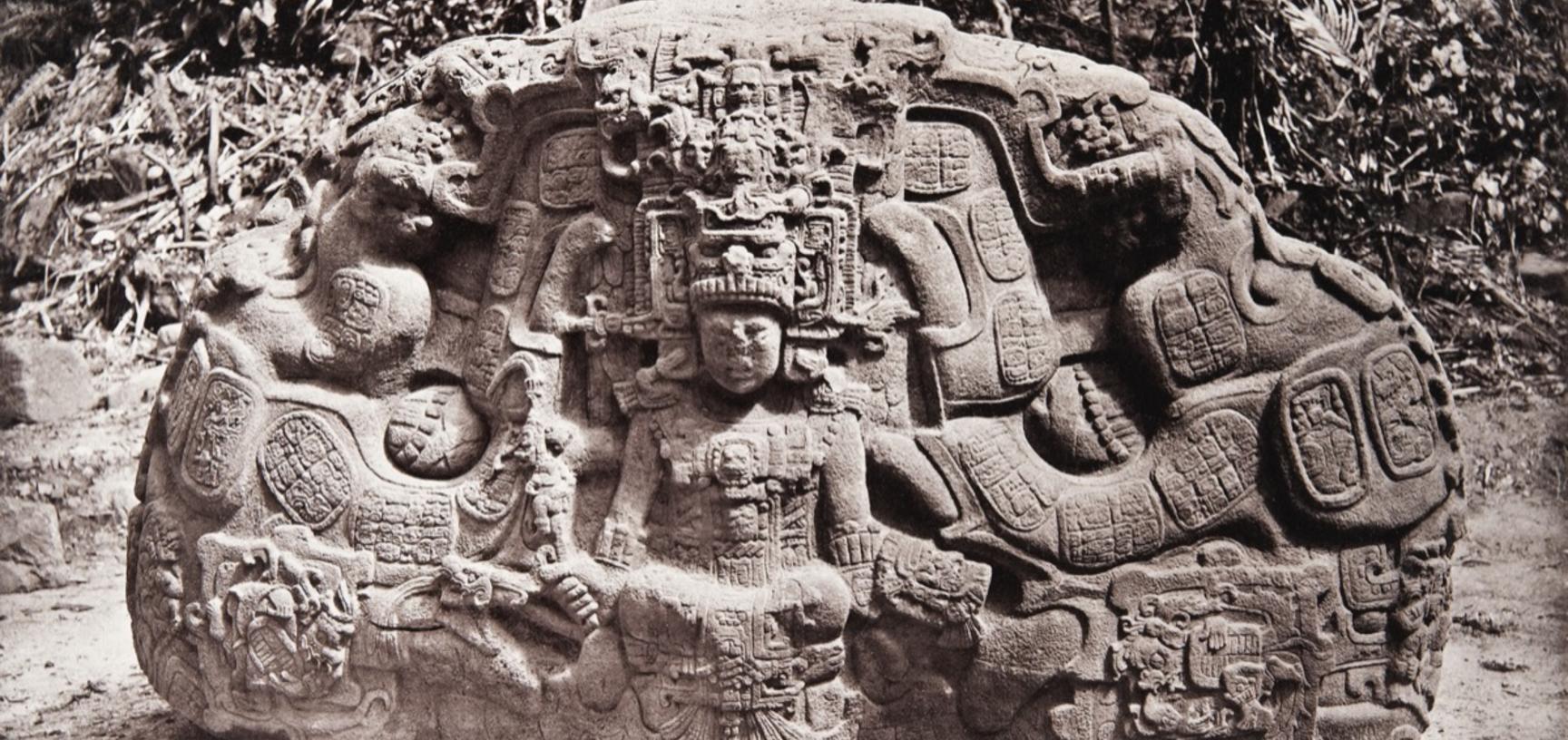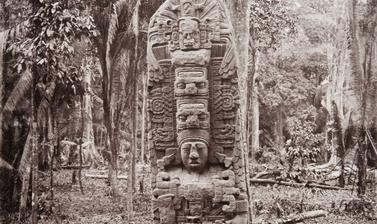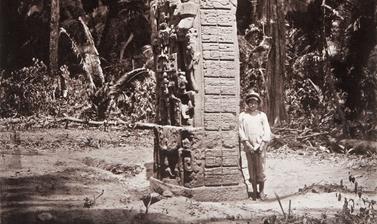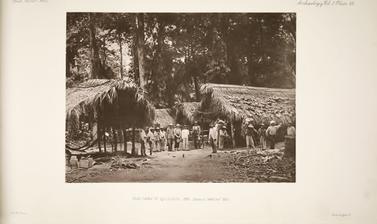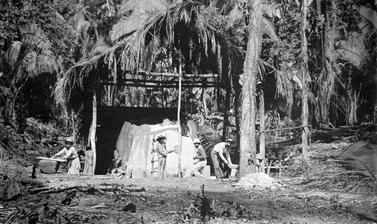Reading the Ruins: Alfred Maudslay and the Maya Site of Quirigua, Guatemala
This case display presents ten mounted prints by Alfred Percival Maudslay (1850–1931), known as the father of Mesoamerican archaeology, alongside related material concerning his pioneering work during the early 1880s at the Maya site of Quirigua, Guatemala. First visiting Central America in the aftermath of the discovery of the Maya civilization, Maudslay was sufficiently intrigued by the strange stone ruins found in the forest to embark upon a monumental project to record as thoroughly as possible what survived, recognising their significance as the remains of a once great people. His archaeological work across several different sites, which continued for more than two decades and required numerous further visits to the region, laid the foundation for generations of scholars to come, ultimately providing the basis for the decipherment a century later of the Maya language itself.
Following his first encounter with the Maya ruins in the spring of 1881, Maudslay returned to Quirigua the following year; and a larger expedition was undertaken from February to May 1883, ‘this time more fully equipped for the work’. This work involved not only producing an extensive photographic survey of the site, developing his images as large glass plate negatives, but also taking moulds of the monuments. From the beginning Maudslay understood that a three-dimensional record would be needed if the surviving Maya remains were to be fully analysed by future generations of archaeologists and epigraphers, and to this end he set about producing a complete set of moulds of the monoliths. Once shipped back to London, the moulds and resulting plaster casts were used to produce exact drawings of the glyphs, which were published with the photographs in his Archaeology (1889–1902), later bound to form a comprehensive record of the Maya ruins of Central America. The result was a magnificent work of documentation which, in the words of Maudslay’s biographer, is ‘valued as highly by modern scholars as it was by their predecessors a century ago’.
The monuments at Quirigua, it is now understood, were erected as part of a complex building programme which took place at the height of the city-state’s power during the Late Classic period. Carved from red sandstone, the stelae and zoomorphs use the iconography of Maya mythology to recount the later history of the city-state, their primary purpose being to legitimate and reinforce the power of the ruler. As the historian Matthew Looper has noted, however, the paradox of Quirigua’s earlier success in breaking from the neighbouring settlement of Copan in the end contributed to the complete decentralization of the region: ‘Abandoned to the encroaching jungle, Quirigua was to slumber in oblivion for almost a millenium until its rediscovery in the nineteenth century set modern scholars on the path of the rediscovery of its history.’ The ten prints here were bequeathed to the Pitt Rivers Museum by Prof E. B. Tylor, who had a long-standing interest in Central America. Although no documentation survives, they were probably sent to him by Alfred Maudslay himself in the mid-1880s, or in the aftermath of his principal work on the site. They represent a selection from a larger set of twenty-five, all showing the Maya site of Quirigua.
Acknowledgements and Credits
- Exhibition researched and curated by Philip Grover
- Case design and installation by Adrian Vizor
You can order a selection of reproduction prints from the Pitt Rivers Museum’s Alfred Maudslay collection online here (Pitt Rivers Museum Prints/King & McGaw).






